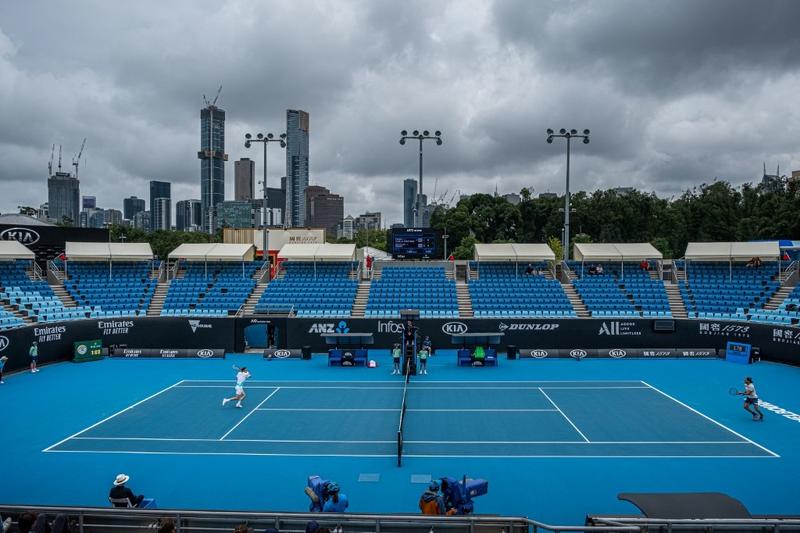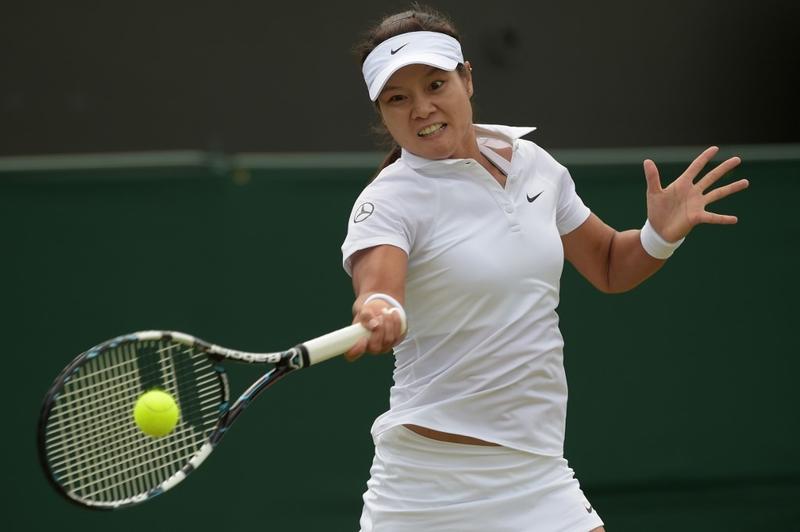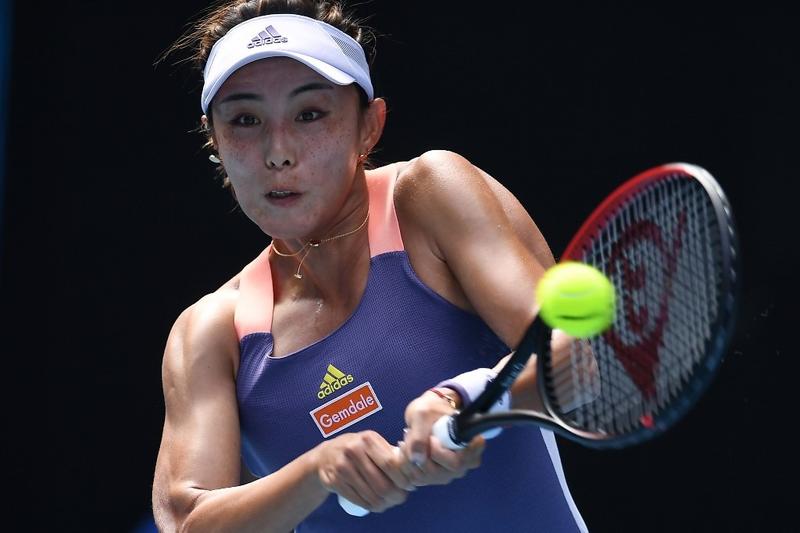 This Jan 16, 2020, photo shows a general view of the outside courts at Melbourne Park as dark clouds hover over Melbourne, following a large downpour and thunderstorms overnight in Melbourne ahead of the Australian Open tennis tournament. (ASANKA BRENDON RATNAYAKE / AFP)
This Jan 16, 2020, photo shows a general view of the outside courts at Melbourne Park as dark clouds hover over Melbourne, following a large downpour and thunderstorms overnight in Melbourne ahead of the Australian Open tennis tournament. (ASANKA BRENDON RATNAYAKE / AFP)
SYDNEY - The Australian Open (AO) is a historically auspicious event for Chinese players and fans, growing in popularity over recent years as standout Chinese performances on the courts gained attention back home.
Compared with the other three Atlantic Grand Slams, the AO is a home-affair for Chinese players and in 2003 the event even rebranded itself "the grand slam of the Asia Pacific"
Tennis legend Li Na made history when she claimed her second Grand Slam title at the Australian Open in 2014, blazing a trail for the next generation of female Chinese tennis players who have strived hard to fill her shoes.
Following a solid performance at last year's AO, a formidable Chinese contingent is likely to return next month, again spearheaded by the women - with top-100 ranked players Wang Qiang, Zhang Shuai, Zheng Saisai, Zhu Lin, and Wang Yafan at the forefront.
Some players will be entering with an extra target on their back, namely Wang who last year toppled one of the most successful Grand Slam players ever, Serena Williams, denying her a historic 24th title.
ALSO READ: Chinese tennis players within reach of Australian Open dream
Also with something to prove are the doubles pairing of Zhang and Australia's Sam Stosur who won the event in 2019 and will be looking to reclaim their title this year.
Compared with the other three Atlantic Grand Slams, the AO is a home-affair for Chinese players and in 2003 the event even rebranded itself "the grand slam of the Asia Pacific".
 In this June 25, 2014 photo, China's Li Na returns against Austria's Yvonne Meusburger during their women's singles second round match on day three of the 2014 Wimbledon Championships at The All England Tennis Club in Wimbledon, southwest London. (CARL COURT / AFP)
In this June 25, 2014 photo, China's Li Na returns against Austria's Yvonne Meusburger during their women's singles second round match on day three of the 2014 Wimbledon Championships at The All England Tennis Club in Wimbledon, southwest London. (CARL COURT / AFP)
AO officials hope to entice hundreds of millions of Chinese viewers to tune in. With Sydney just three hours ahead of Beijing in terms of time zone, fans can catch the action live and watch their homegrown heroes take down some of the biggest names in tennis.
While experience is crucial, fans are also eager to see fresh talent rising through the ranks to carry on their hopes.
This week two Chinese players, Lu Jiajing and Yuan Yue, fell at the final hurdle of the AO qualifiers, losing the opportunity to appear in their first ever Grand Slams.
Despite the disappointing result, 20-year-old Yuan put in a valiant effort against former Wimbledon finalist Eugenie Bouchard, which followed a straight set win over higher-ranked player, Maja Chwalinska from Poland, proving the up-and-comer to be one to watch.
Carrying on the flame will be teenager Wang Xiyu, who at 19 will compete in this year's AO main draw after becoming one of the tournament's wildcard entries.
As a junior, Wang won the 2018 US Open girls' title against former junior world No 1 Clara Burel, becoming the first Chinese player to hold the title.
 China's Wang Qiang hits a return against Tunisia's Ons Jabeur during their women's singles match on day seven of the Australian Open tennis tournament in Melbourne on Jan 26, 2020. (GREG WOOD / AFP)
China's Wang Qiang hits a return against Tunisia's Ons Jabeur during their women's singles match on day seven of the Australian Open tennis tournament in Melbourne on Jan 26, 2020. (GREG WOOD / AFP)
Following a seamless entry into the WTA, Wang carries the weight of being considered one of the more likely to follow in Li Na's footsteps to the top of the sport.
While female players currently dominate Chinese tennis - boasting a slew of players in the top 100 rankings compared with none in the men's - a fresh batch of male talent have also been proving themselves in the junior competitions.
READ MORE: Bittersweet day for China's women in French Open qualifiers
Wu Yibing became World No 1 in the junior rankings after winning the boys' singles title at the 2017 US Open, and having just turned 21 will be looking to transfer that success to the ATP.
Meanwhile, 24-year-old Chinese player Zhang Zhizhen may have time to improve his game after bowing out of the AO qualifiers.
Despite being over six years since Li Na won the AO, her preeminence has left a lasting mark on the sport that Chinese fans are eager to fill. The surge of popularity surrounding tennis, created by Li and growing steadily ever since, suggests that at some point there will be another Chinese champion. The only question is will it be at an AO?


